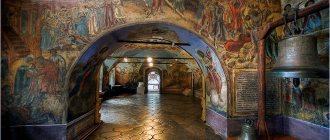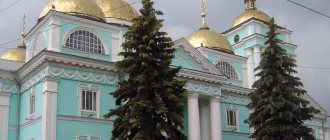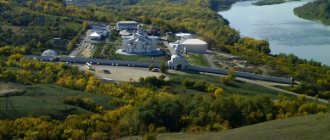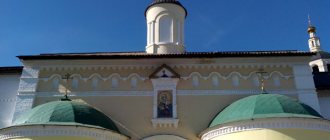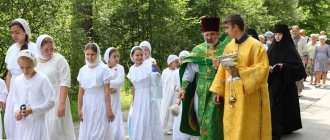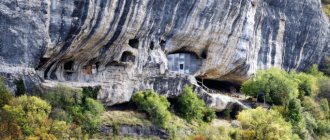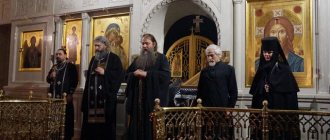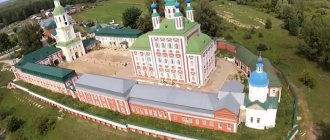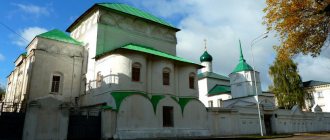Mir
Russia Republic of Crimea Cosmo-Damianovsky Monastery (Alushta) Map is loading...
{"format":"leaflet","minzoom":false,"maxzoom":false,"limit":50,"offset":0,"link":"all","sort":[""], "order":[],"headers":"show","mainlabel":"","intro":"","outro":"","searchlabel":"\u2026 \u0441\u043b\u0435\ u0434\u0443\u044e\u0449\u0438\u0435 \u0440\u0435\u0437\u0443\u043b\u044c\u0442\u0430\u0442\u044b","default":"","import-annotation":false,"width ":"auto","height":"350px","centre":{"text":"","title":"""link":"""lat":44.66467693999999966081304592080414295196533203125,"lon": 34.26963305999999676032530260272324085235595703125,"icon":""},"title":"","label":"","icon":"","lines":[],"polygons":[],"circles":[ ],"rectangles":[],"copycoords":false,"static":false,"zoom":8,"defzoom":14,"layers":["OpenStreetMap"],"image layers":[] ,"overlays":[],"resizable":false,"fullscreen":true,"scrollwheelzoom":true,"cluster":false,"clustermaxzoom":9,"clusterzoomonclick":true,"clustermaxradius":80, "clusterspiderfy":true,"geojson":"","clicktarget":"","showtitle":true,"hidenamespace":false,"template":"","userparam":"","activeicon": "","pagelabel":false,"ajaxcoordproperty":"","ajaxquery":"","locations":[{"text":"\u003Cb\u003E\u003Ca href=\"/palomnik/%D0% 9A%D0%BE%D1%81%D0%BC%D0%BE-%D0%94%D0%B0%D0%BC%D0%B8%D0%B0%D0%BD%D0%BE%D0%B2 %D1%81%D0%BA%D0%B8%D0%B9_%D0%BC%D1%83%D0%B6%D1%81%D0%BA%D0%BE%D0%B9_%D0%BC%D0 %BE%D0%BD%D0%B0%D1%81%D1%82%D1%8B%D1%80%D1%8C_(%D0%90%D0%BB%D1%83%D1%88%D1% 82%. 3c\ u0443\u0436\u0441\u043a\u043e\u0439 \u043c\u043e\u043d\u0430\u0441\u0442\u044b\u0440\u044c (\u0410\u043b\u0443\u0448\u0442\u0 430)\»\u003E\u041a\ u043e\u0441\u043c\u043e-\u0414\u0430\u043c\u0438\u0430\u043d\u043e\u0432\u0441\u043a\u0438\u0439 \u043c\u0443\u0436\u0441\u0 43a\u043e\u0439\u043c\u043e \u043d\u0430\u0441\u0442\u044b\u0440\u044c (\u0410\u043b\u0443\u0448\u0442\u0430)\u003C/a\u003E\u003C/b\u003E\u003Chr /\u003E\ u003Ca href=\ "/palomnik/%D0%A1%D0%B2%D0%BE%D0%B9%D1%81%D1%82%D0%B2%D0%BE:%D0%90%D0%BD%D0%BD% D0%BE%D1%82%D0%B0%D1%86%D0%B8%D1%8F\" title=\"\u0421\u0432\u043e\u0439\u0441\u0442\u0432\u043e:\u0410\u043d \u043d\u043e\u0442\u0430\u0446\u0438\u044f\»\u003E\u0410\u043d\u043d\u043e\u0442\u0430\u0446\u0438\u044f\u003C/a\u003E: \u0 43c\u043e\u043d\ u0430\u0441\u0442\u044b\u0440\u044c\u0421\u0438\u043c\u0444\u0435\u0440\u043e\u043f\u043e\u043b\u044c\u0441\u043a\u043e\u04 39\u0438\u041a\u0440\u044b\ u043c\u0441\u043a\u043e\u0439 \u0435\u043f\u0430\u0440\u0445\u0438\u0438 \u0423\u041f\u0426 (\u041c\u041f). \u041d\u0430\u0445\u043e\u0434\u0438\u0442\u0441\u044f \u0432 \u041a\u0440\u044b\u043c\u0443 \u043d\u0430 \u0411\u0430\u043 1\u0443\u0433\u0430\u043d-\ u042f\u0439\u043b\u0435, \u043d\u0430 \u0442\u0435\u0440\u0440\u0438\u0442\u043e\u0440\u0438\u0438 \u041a\u0440\u044b\u043c\ u0441\u043a\u043e\u0433\u043e \u0437\u0430\u043f\u043e\u0432\u0435\u0434\u043d\u0438\u043a\u0430 \u0432 \u043e\u043a\u0440\u0443\u0436\u0435\u043d\u0438\ u0438\u0433\u043e\u0440\u0427 \u0451\u0440\u043d\u0430\u044f, \u0411\u043e\u043b\u044c\u0448\u0430\u044f \u0427\u0443\u0447\u0435\u043b\u044c \u0438 \u04 1c\u0430\u043b\u0430\u044f\ u0427\u0443\u0447\u0435\u043b\u044c, \u0445\u0440\u0435\u0431\u0442\u0430 \u041a\u043e\u043d\u0451\u043a. 20 20 20 20 20 20 20 20 044b.","title":"\ u041a\u043e\u0441\u043c\u043e-\u0414\u0430\u043c\u0438\u0430\u043d\u043e\u0432\u0441\u043a\u0438\u0439 \u043c\u0443\u0436\u0 441\u043a\u043e\u0439\u043c \u043e\u043d\u0430\u0441\u0442\u044b\u0440\u044c (\u0410\u043b\u0443\u0448\u0442\u0430)»»link»:»»»lat»:44.66467693999999966081304 592080414295196533203125,"lon":34.26963305999999676032530260272324085235595703125 ,"icon":""}],,"imageLayers":[]}
44.759285; 34.462932
Russia, Republic of Crimea, Alushta urban district
Republic of Crimea
Russia
Phones:
+7(978) 705-58-21 (pilgrimage trips to the monastery, registration), (pilgrimage hotel, reservations)
Email:
Kosmo-Damianovsky Monastery
- monastery of the Simferopol and Crimean diocese of the UOC (MP). It is located in Crimea on Babugan-Yayla, on the territory of the Crimean Nature Reserve, surrounded by the Black, Bolshaya Chuchel and Malaya Chuchel mountains, and the Konyok ridge. Located 20 km from Alushta.
History[edit]
By a synodal decree of May 4, 1850, Archbishop Innocent was informed that the highest permission had been given for the opening of the Bakhchisarai monastery with the monasteries; including the cinnamonium at the source of St. Cosmas and Damian. In the same year, Archbishop Innokenty petitioned for the allotment of 4 acres of land near the source for the establishment of the Kosmodamian cinnovia, and after a year and a half this area was separated from the forest government dacha. Subsequently, in 1872, by royal decree, another 19 acres were demarcated from the same government dacha.
Temporarily, until the opening of the cinnamonium, in 1851, the trustees of the source of St. Cosmas and Damian were appointed rector of the Theodoro-Stratilatovskaya Church in Alushta, priest Dmitry Chernyaev, and the elder, merchant Andrei Korotenko. On a clear winter morning in late December, the trustees went on horseback to the source. The place was deserted and silent. In the snow there were many traces of deer and goats going down to drink, but there were no traces of humans at all. Father Demetrius blessed the water in the source, praying for the health of the Tsar and all Orthodox Christians.
Despite the permission received, the cinema did not open soon. In 1853, the Crimean War began; in 1854, Anglo-French troops landed in Crimea and besieged Sevastopol. During this difficult time, Archbishop Innocent continued to visit Crimea. The thought of discovering the cinnamonium never left him. It was necessary to find funds for the construction of the monastery. In the consistory case regarding the Kosmodamian Kinovia it was stipulated: “Kenovia does not receive support from the treasury, but is supported by the voluntary donations of pilgrims.” The construction of the monastery was started by the Simferopol merchant of the 1st guild, hereditary honorary citizen, headman of the Alexander Nevsky Cathedral in Simferopol Ivan Potapovich Sanyutin. He suffered for a long time from fever, nervous breakdown and weakness of the whole body. After bathing in the spring, Sanyutin was healed. In gratitude to the saints, this worthy man made a vow to build a small church over a spring with two baths, and nearby several cells for both monks and pilgrims. The founder of the Bakhchisarai Assumption skete and the Crimean monasteries, Archbishop of Kherson and Tauride Innokenty bequeathed 100 shares of the Shipping and Trade Society. These shares were divided between the monastery and the monasteries. The Kosmodamianovskaya Kinovia accounted for nine shares, which were sold, and with the proceeds of 5 thousand rubles, 5 percent state tickets in the name of the Kinovia were purchased. The interest from this capital went to the maintenance of the monastery.
After the end of the Crimean War, in 1856, the first builder of the monastery, Hieromonk Macarius, was sent from the Bakhchisarai Assumption Skete, who was later elevated to the rank of abbot. (On September 10, 1857, Hieromonk Macarius was appointed as the first rector, and thus the Kosmodamian monastery received the final administrative structure.) The construction of the monastic church began almost from scratch. There were no funds to hire workers; the monks had to do everything on their own. But nevertheless, the results were amazing. Arriving at the source, he, together with the monk Ignatius, immediately began to build a small wooden church according to the drawing given by Archbishop Innocent. Many residents of Simferopol helped them with their donations, and a year later the church was ready for consecration. Unfortunately, Archbishop Innocent died without waiting for this desired event.
It is not known how the cinema would have been settled if not for the truly ascetic work and efforts of the first abbot, Fr. Macarius, who did extremely much for the monastery. Many names have been forgotten, graves have been lost, and simple justice requires preserving the memory of people who devoted their entire lives to a holy cause.
Many were attracted here by the personality of Fr. Macarius, who treated everyone with love and meekness. Despite the poverty of the monastery, Fr. Macarius did not refuse anyone who wanted to settle here. But only hardworking people could stay in the monastery. The lazy quickly left him.
The number of brethren increased, it was necessary to build new cells. We had to cut down forest, deliver bricks for stoves, glass for windows, and so on. The abbot himself worked with a pick and an ax, and went shopping on foot to Simferopol. He never made any orders regarding work at the monastery: what was Fr. Macarius, the monks also did this.
Health o. Macarius was undermined by heavy physical labor; he suffered seriously from tuberculosis, which developed after a fall on the stairs of the Assumption Monastery. The sick rector was placed in the Simferopol hospital at the Taranov-Belozerov hospice house, where on September 18, 1878, at 4 o’clock in the morning, Fr. Macarius died. From the Taranov-Belozerov shelter the body of Fr. Macarius, accompanied by all the city clergy, was transferred to the Alexander Nevsky Cathedral. After the burial ceremony, it was sent to be buried in Kosmodamian’s kennovia. Father Macarius was buried in the Church of the Transfiguration of the Lord, in the vestibule at the western door. A cast-iron grate was placed around the grave, and a large marble slab was built on the grave itself in 1880.
In 1874, at the expense of willing donors, a second monastery church in the name of the Transfiguration of the Lord was built, wooden, warm, with a two-tier iconostasis. Both churches were, according to consistory records, “supplied with mediocre utensils.”
Construction of the monastery continued. In 1891, instead of the first wooden chapel, a stone chapel was built over the spring, beautiful and convenient for worship. In the center of the chapel, rising above the floor, there was a small stone reservoir in which the source was enclosed. Filling the reservoir, the water noisily flowed into a large wooden pool, located indoors and serving as a bathhouse for pilgrims. The bathhouse was divided into two halves - men's and women's. Despite the low water temperature (+8° C), many pilgrims swam in the pool, while others limited themselves to partial ablution. The water in the pool was not stagnant, as it was constantly full and excess water drained away. There was also a special device with which it was possible to completely change all the water in the pool in just 25 minutes. In the chapel, from the source itself, they took water for drinking.
The Kosmodamianovsky monastery was a monastery for men for 43 years, from 1856 to 1899. If the first twenty years, during the management of the monastery by Abbot Macarius, could be called a time of prosperity for the monastery, then the next 23 years were a time of decline.
In July 1899, the diocesan authorities received a decree from the Holy Synod to transform the monastery into a women's monastery. From the Toplovsky Paraskevievsky women's monastery, the dean, Mother Varsonofia, was transferred to the Kosmodamianovsky monastery, and was appointed abbess. Twenty-five nuns, led by nun Barsanuphia, moved to a poor monastery at the foot of Chatyrdag.
Under the leadership of Abbess Barsanuphia, the monastery became completely unrecognizable. The Kosmodamian Church and other buildings were thoroughly renovated. To strengthen the terrace on which the large church stood, a stone retaining wall 40 fathoms long was erected. Several new cells, a prosphora room, a bakery, a workshop, a laundry, a barn with bins, a hay barn for 1,000 poods, and two hotels with twenty rooms for visitors were built. In 1913, in honor of the 300th anniversary of the reign of the House of Romanov, the chapel over the source was restored.
In 1907, the Kosmodamianovskoe farmstead opened in Simferopol, located halfway from the farm, which was very convenient for transporting crops to the monastery and when traveling on farm business. This courtyard, which the residents of Simferopol called the “monastic church,” no longer exists.
The Kosmodamian monastery was one of the most respected and beloved monasteries in Crimea. Russian emperors visited Kinovia several times. A separate entry from the archives of the consistory reports that “this cenovia in October 1873 was twice blessed by the visit of His Imperial Highness the Sovereign Heir, Tsarevich Alexander Alexandrovich, and in 1880, for the third time, the cenovia was blessed by the visit of Their Imperial Highness the Sovereign Heir Alexander Alexandrovich, together with Empress Tsesarevna Maria Feodorovna, now reigning peacefully and wisely by God’s Grace, where they deigned to stay from October 14th to 18th.” The royal couple spent these few days in the modest house of the monastery abbot. On October 25, 1911, Emperor Nicholas II visited the monastery and prayed at the St. Cosmas and Damian and drank holy water.
In the 1870s, by order of Alexander III, a royal hunting lodge was built near the Kosmodamianovsky Monastery. Since 1910, improved dirt roads from Yalta, Alushta and the most important hunting areas began to be built to the royal house, and consequently to the monastery. In 1913, an imperial hunting reserve was organized in Crimea.
In 1920, shortly after the establishment of Soviet power in Crimea, the last, most difficult and bitter period of the monastery’s life began. The January 1918 decree on the separation of church and state was successfully implemented on the peninsula. The nationalization of the monasteries of Crimea was carried out from the beginning of the 1920s, and by the mid-20s there was a tendency towards their complete liquidation. During 1922, 74 churches of various cults were liquidated in Crimea, as well as 4 monasteries, 3 were in the process of liquidation. A colony for disabled people named after Kalinin was set up in the Kosmodamianovsky Monastery; it existed until 1924, after which the disabled were transferred to a new colony, the former Kiziltash monastery. An artel was organized from the nuns, which included 42 people. The churches were sealed, but practically the nuns continued to live a monastic life.
In 1923, the Council of People's Commissars of the RSFSR issued a decree “On the Crimean State Reserve and Forest Biological Station.” The Presidium of the Crimean Central Executive Committee decided: “The Kosmo-Damianovsky Monastery with all its buildings should be transferred to the Crimean Nature Reserve. The artel of nuns currently living there will be allowed to remain until April 1, 1924.” The management of the reserve demanded that the colony of disabled people be removed from its territory, citing the fact that no one except its staff should live in the reserve. That is why the Crimean Central Executive Committee transferred the former monastery to the reserve and proposed to the People's Commissariat for Social Security to transfer disabled people to another place. The management of the reserve did not touch the nuns, which was immediately reported to the highest authorities. In June 1924, in a memo to People's Commissar V.S. NKSO worker N. Wegner reported to Brezovsky: “The disabled people were transferred, but the nuns remained there, and apparently they don’t even think about leaving, because the reserve gave them land for a vegetable garden and a clearing for sowing a vegetable garden. In addition, although there is a seal on one of the churches, the seal is not of the established type and the keys to the church doors are kept by the nuns. But this is not enough: the nuns built a new church there. For this purpose, in the former prosphyra room they set up a throne, an altar, etc., new tonsures, ordinations, etc. are taking place.
Based on all of the above, I propose to bring to the attention of the Council of People's Commissars and the Central Central Executive Committee that, firstly, the resolution on the liquidation of the former. The Kosmo-Demyanovsky Monastery was not fulfilled by the Alushta church table, and, secondly, that the reserve, when it said that no outsiders should live on the territory of the reserve, was lying. He couldn’t live with disabled people and NKSO, but he could live with nuns. They don’t bother him, and he gives them land for cultivation.”
Apparently, it was not only the nuns who opposed the closure of the monastery. The Yalta Regional Executive Committee in May 1925 complained to the Central Administrative Department of Crimea: “The Church Table of YaltRIK reports that in the affairs of the former Kosmo-Damianovsky Monastery, now under the jurisdiction of the Crimean State Reserve, there is a TsAU-Kr relationship. dated 8.IV-24 on the liquidation of 2 churches of the Kosmo-Damianovsky monastery and the eviction of monks. However, b. The Alushta district executive committee did not comply with the instructions indicated in this regard and the nuns, numbering 20 people, continue to live in their cells at the monastery, where Hieromonk Romanchenko Pavel, who is serving in the Crimean State Reserve, also lives, and the nuns formed a labor artel.”
However, this too came to an end. The Church of the Transfiguration was used to set up a club in the Crimea Reserve, a natural history museum was opened in the Kosmodamianovsky Church, and in the chapel with a bathhouse it was planned to set up a hatchery for hatching trout fry. One of the Soviet guidebooks to the Crimean Reserve tells us: “During the years of the civil war, the monastery was a refuge for the counter-revolution. After the liberation of Crimea from Wrangel and interventionists, until 1923 the monastery existed under the guise of a “monastic labor artel” and had close ties with Tatar counter-revolutionary nationalists. During the liquidation of the monastery, a lot of weapons and ammunition were found here.” I think comments are unnecessary.
During the Great Patriotic War, the royal hunting lodge and all the buildings of the former Kosmodamianovsky monastery were destroyed, except for the chapel over the source.
70 years after the closure of the monastery, by Decree of the President of the Republic of Crimea No. 50/94 of April 26, 1994, the territory and buildings of the monastery were returned to the Simferopol and Crimean diocese. The charter of the monastery of Cosmas and Damian was again registered with the Council for Religious Affairs under the Cabinet of Ministers of Ukraine. On July 14, 1994, on the day of remembrance of the holy unmercenaries and wonderworkers Cosmas and Damian, Archbishop Lazarus of Simferopol and Crimea celebrated a festive liturgy in the chapel over the holy spring.
Source of St. John the Lenten
This source is located near the village of Oboronnoye (formerly Kamary) in the Balaklava region and is the only place revered by Orthodox Christians in Crimea, associated with John the Baptist. According to legend, the source flowed here several hundred years ago on the day of the beheading of John the Baptist - September 11. In 1848, the Church of St. John the Baptist was built above it. In the church spring pool where the holy water flowed, there lived a large old frog. She surfaced at the entrance of each visitor to the temple, and the local population treated her as the keeper of the holy spring. After the establishment of Soviet power in Crimea, the church was used as a cattle pen, gradually destroyed, and during the Great Patriotic War, the temple was hit by an enemy shell. But even after the desecration and destruction of the church, local people continued to secretly go to the holy spring. Every year on September 11, pilgrims from surrounding settlements gathered here.
Closer to our time, the captivity of the source was restored, a font was equipped, and every year in September - on the day of the beheading of the prophet - people flock here. How to get to the source of St. John of Lenten The village of Oboronnoye is located four kilometers east - northeast of Balaklava. The turn to the village of Oboronnoye from the Sevastopol - Yalta highway is located approximately 5 km from the Yalta ring, from which you need to walk for about 15-20 minutes. Directly to the source of St. John Lenten can be driven along the asphalt road leading from the village to the former top-secret site "Sotka" (a complex of coastal missile positions "Object-100").
Current state[edit]
Now monks and monks work in the monastery and worship services are held. After the opening, a temple was built in honor of the holy martyrs Cosmas and Damian, and major repairs were carried out in the fraternal building. The chapel has been restored.
Since 2006, construction began on the courtyard of the Most Holy Theotokos in the village. Parthenite. At the moment, two churches have been built in honor of the icon of the Mother of God “The All-Tsarina” and St. John of Goth; the construction of the bell tower and chapel in honor of the Annunciation of the Blessed Virgin Mary is being completed; The construction of the fraternal building, almshouse, and pilgrimage shelter continues. With God's help, it is planned to build the Cathedral of the Assumption of the Blessed Virgin Mary.
Compound[edit]
The temple of the metochion in the village of Partenit
Due to the remoteness of the monastery and the ban on conducting economic and construction activities in the protected area. By the Blessing of His Eminence Metropolitan Lazar, a decision was made to create a monastery courtyard.
Initially, it was created on a small piece of land in the private house of citizen Stepanenko, lane. Steep 7. The site was small and in a difficult place for construction. Then, at the intercession of Metropolitan Lazar and local authorities in 1996. a plot of land was allocated on the site of a disbanded military unit (Frunzenskoye Highway 1a) for the construction and development of the monastery's courtyard.
The farmstead received its development and creation in 2004. with the arrival of the new abbot of the monastery of St. Martyr. Cosmas and Damian: Hieromonk Markell (now Archimandrite Markell).
At the moment, full-scale construction of the courtyard is underway. Two churches have already been built in honor of: the icon of the Mother of God “The All-Tsarina” and St. John of Gotha; partial landscaping of the territory and planting of flower beds and lawns have been carried out; in March 2013 the completion of the construction of the bell tower and chapel in honor of the Annunciation of the Blessed Virgin Mary is planned; The construction of the Brotherhood building, almshouse premises, pilgrimage shelter, etc. continues. With God's help, next year it is planned to build the Cathedral of the Assumption of the Blessed Virgin Mary.
Monks, monks, and novices of the monastery work and strive in the courtyard, vigilant prayer goes on, services, prayer services, panehidas are held regularly in both churches - spiritual life is being revived.
Address:
Crimea, town Partenit, pl. John Gotfsky, Frunzenskoe highway 1a
Directions:
- From the railway From the station in Simferopol there are direct minibuses from Simferopol to Partenit.
- Buses from Alushta to Partenit run regularly from the Alushta bus station.
- Buses from Yalta to Partenit run regularly from the Yalta bus station.
Shrines[edit]
Icon of Saints Cosmas and Damian
- Ancient icon of Saints Cosmas and Damian with particles of their relics
- The holy source of the unmercenaries Cosmas and Damian
- Miraculous Icon of the Mother of God “Vladimir”
- Myrrh-streaming and Miracle-working Icon of the Mother of God “Fedorovskaya”
- Icon of the Mother of God "Jerusalem"
- Particles of the relics of the Venerable Kiev-Pechersk Saints
- Myrrh-streaming icon of St. Luke Arch. Crimean Confessor
- Icon with the Relics of the Holy Great Martyr and Healer Panteleimon
- Icon with the Relics of St. Innocent Arch. Kherson and Tauride
- Icon with the Relics of St. Kuksha of Odessa
Contacts[edit]
Address:
Crimea, Alushta, Crimean Nature Reserve
The monastery is located in the mountains, on the territory of the Crimean Nature Reserve. For an independent visit, permission is required, which can be obtained at the monastery courtyard in the village. Parthenite.
There are several paths to the monastery, the main ones are:
- Along Romanovskoye Highway
- through Babugan-yayla: of the Black Sea, go up to Babugan using different paths - then through Babugan to the descent into the valley of the Sary-Su-Alabash-Savlukh-Su-Kebit-Su-Alma rivers:
- through the Ak-Chokrak source - Diploma pass - Duplya tract - Konek mountain range - descent into the Sary-Su-Alabash-Savlukh-Su-Kebit-Su-Alma river valley;
- along the Talma-Bogaz trail, Talma source - then 2 km along Babugan-yayla along the Talma-Bogaz trail - then to the right along the path to the "Hat" rock, which is on the northern slope of Babugan - descent into the valley of the Sary-Su-Alabash-Savlukh-Su rivers Kebit Su Alma.
Phones:
+7(978) 705-58-21 (pilgrimage trips to the monastery, registration), (pilgrimage hotel, reservations)
Email:
Source of Saint Paraskeva
Another miraculous spring, known far beyond the borders of Crimea, is located not far from the village of Topolyovka. It bears the name of Saint Paraskeva. Local residents believed that it was here, in the remote tract of Toplu, that Saint Paraskeva met her martyrdom - her head was cut off. And at the very moment when the earth was watered with the blood of the venerable martyr, a spring began to flow from the depths. This source turned out to be healing (it especially helped with eye diseases). And every year on July 26, on the day of Saint Paraskeva, the suffering flocked here. A prayer service was served with the blessing of water, people collected water into vessels and took it home. Confirmation of the holiness of the source was the appearance in it of an icon depicting the Venerable Martyr Paraskeva. The saint was depicted standing at full height, with a cup in her hands, and in the cup were healed eyes. Later, in 1778, Greek settlers took this icon to Mariupol, where it was preserved in the Church of the Nativity of the Virgin Mary and once saved the city from cholera.
In 1864, the Trinity-Paraskevievsky Toplovsky Convent was opened at the source. Now there is a closed font next to the source of St. Paraskeva. You can plunge into it both in winter and in summer (although on Mondays and Thursdays it may be closed for sanitary days). How to get to the source of St. Paraskeva: Toplovsky Monastery, on whose territory the spring is located, is located 70 km from Simferopol (in the Feodosia direction). You should get to the village of Topolevka. From the Simferopol bus station "Kurortnaya", which is near the railway station, you can get to Topolyovka by buses going to Feodosia, Sudak, Koktebel, Kerch. From the stop to the monastery - 1.5 km (as you move to the right there will be a sign and a turn to the monastery), this path will have to be walked or taken by passing transport.
Pilgrim[edit]
The Monastery of the Holy Martyrs Cosmas and Damian organizes pilgrimage trips to the monastery.
In the trip program:
- Liturgy and prayer service
- Dipping into a holy spring
- Tour of the monastery
- Hot herbal tea
Departure at 8.00 from the monastery courtyard
at the address: town. Partenit, Frunzenskoe highway 1-A.
Phone number for inquiries and appointments: +7(978) 705-58-21.
You can also make a pilgrimage to the monastery with the help of the Sevastopol pilgrimage service “Kupel”. Telephone.
Source of Saint Anastasia
The source of Saint Anastasia the Pattern Maker, or, as it is also called, Ai-Anastasia, has been revered in Crimea since the Middle Ages. It is located in the Church cave grotto (another name is the grotto of St. Anastasia) of the Kachi-Kalyon rock massif, 8 kilometers from Bakhchisaray. Legend says that a long time ago, a local girl Anastasia, saving her herd, died in the caves of Kachi-Kalyon - she became a victim of the snakes and monsters that lived here. The rock collapsed on the monsters, and in the morning a stream of the purest spring water came out of the stone - these were the tears of Kachi-Kalyon, he was mourning the dead child. Since then, the spring, which received the name of Saint Anastasia, has been considered sacred and still remains one of the most revered in Crimea.
The spring water enters the font from a small crack in the rock. And the grotto in which it is located resembles the dome of a huge temple with a ceiling height of up to 40 meters. December 22 – St. Anastasia - local pilgrims come to the source, and the priest conducts the blessing of the water. In ancient times, near the source there was a large monastery, known far beyond the peninsula. And now the Church of the Great Martyr Anastasia the Pattern Maker is located nearby. This is perhaps the most unusual temple on the peninsula - it is located in an old adit, going several tens of meters deep. This place is damp, the paint on the walls and vaults does not stick, so the temple is decorated... with beads and beads, multi-colored stones. And although there are no windows inside, everything around is flooded with unusual light - the flames of candles, reflected in the beaded mosaic on the ceiling and beaded lamps, permeate the space with beneficial rays. How to get to the source of St. Anastasia: You can get to Kachi-Kalyon and the source from Bakhchisarai by flight Bakhchisarai - Sinapnoe. You need to get off at the Predushchelnoye-2 stop, and then walk 1.3 km in a southeast direction. By car you need to drive 8 km from the southern outskirts of Bakhchisarai along the Kachi River.
